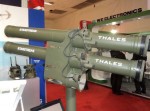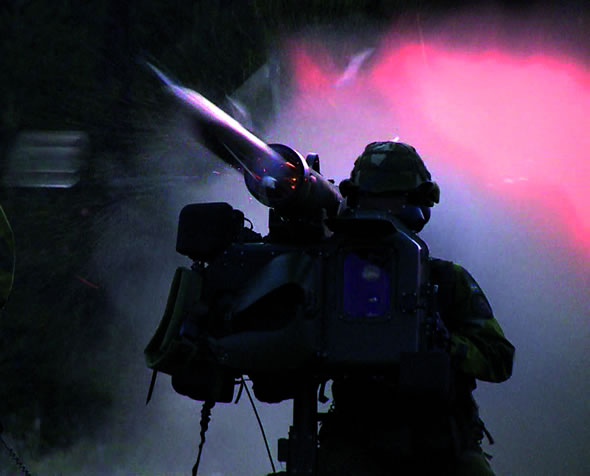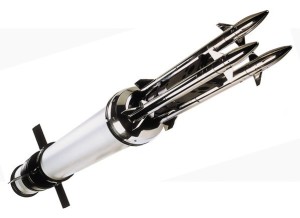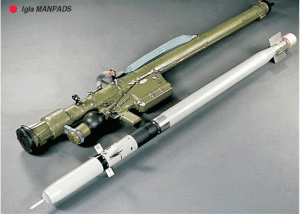
The Chief of the Indian Army has recently warned that 97 % of India’s Air Defense is obsolete. Given the fact that the Indian Armed Forces fully realize that they might have to fight a two-pronged war in the near future against China and Pakistan this claim of the Army Chief cannot be taken lightly. To make matters worse Israel’s IMI and Germany’s Rheinmetall Air Defense, both offering advanced air defense systems, have been banned from conducting business with the Indian Defense Ministry for the next 10 years.
India has to therefore seriously augment its Air Defense capabilities. Several ongoing programs include the replacement of SA-18 Very Short Range Air Defense Systems (VSHORAD), with modern weapons. The cost of the replacement, as anything in India – is huge: over replacement of about 800 launchers and initial delivery of 5,000 missiles, at a cost of 27,000 Crore (US$5.2 billion). Evaluations of some of the candidates are expected to commence in May–June this year. The ongoing DefExpo 2012 provides India with a unique opportunity to take a look at some of the most cutting edge Air Defense Systems that are on display.

In contrast to the passive (UV/IR) guided weapons currently in operation, two VSHORAD systems employing laser-beam riding semi-active command to line of sight (SACLOS) guidance technique stood out in this year’s DefExpo. While such systems are presumably heavier and more complex, the more affordable cost of their seekerless missiles is bound to come to effect in the evaluating the total cost of ownership (including missiles, test and practice rounds).
RBS 70/NG – SAAB’s RBS 70 comprises the missile in a launch container, a tripod firing stand and an optical sight. It is operable by one, and portable by three persons. The missile is outfitted with a solid propellant booster motor. When the operator fires the missile, the booster motor is ignited inside the launch tube and the missile is accelerated out of the tube. The control surfaces and the four fins open into position as the missile leaves the tube. The sustainer motor ignites after the missile has travelled a safe distance from the launch position.
The booster is subsequently jettisoned. The RBS 70 has laser beam riding guidance, riding a laser signal being beamed from its own launch station, rather than being guided from the front towards the reflected signal from a laser designated target. The missile operator can locate a hostile target visually or the target can be detected by a search radar. When the target is acquired, the operator tracks the target and the Raytheon Cossor IFF880 friend or foe system interrogates the target. If the target is identified as friendly, a warning light in the sight is illuminated and the firing sequence is halted. The operator aims the missile towards the target, fires and tracks the target, thus aiming the laser guidance beam continuously at the target until the moment of impact. Speaking to Defense Update Saab’s spokesperson stated that as the laser beam riding guidance of the RBS 70 is located in the tail of the missile, it is extremely difficult to jam it, since the missile has no seeker head at the front.
In 2011 Saab has introduced an improved version of the system, designated RBS 70NG (new generation), which is comprised of a new sight module, integrating a high resolution thermal imager allowing 24/7 operational capability.
The new module enables advanced cueing and an auto tracker, to improve reaction times and target acquisition, and engagement, thus increasing the hit probability throughout the missile range. Improved guidance has also been introduced, to further increase performance both for manual and auto-tracker engagements. The system has a built-in video recorder for after-action review. With these improvements RBS 70NG offers a flexible and scalable evolution to meet evolving Ground Based Air Defense requirements with Man-Portable Air Defense System (MANPADS) as well as with remote-controlled or vehicular applications.

StarStreak – Starstreak developed by the Thales group is a close-range anti-aircraft guided-weapon system designed for use against enemy helicopters and ground attack aircraft. Starstreak contains a two-stage solid propellant rocket motor, a separation system and three high-density darts. A pulse of power from the missile-firing unit sets off the first-stage motor that ignites and therefore increases the speed of the missile. The missile enters into a spin due the Canted nozzles. The efferent force of the roll causes the fins to unfold for aerodynamic stability in flight. Once clear of the canister, the motor is thrown out. The second-stage motor ignites and accelerates the missile to a velocity of Mach 4.
A severance system at the front end of the motor holds three darts. When the second stage motor is burnt out, the propulsion triggers the three darts to automatically break up. The darts sustain a high kinetic energy as they are steered to the same target. Each dart includes guidance and control circuitry, a thermal battery and a high-density penetrating warhead with fuse. The severance of the darts kicks off the arming of the specific warheads. Each dart is steered independently using a double laser beam riding system. As the dart collides with the target, the inertial forces trigger the delay fuse, allowing the warhead to penetrate before detonation.
MISTRAL-2 – Another competitor seeking the future Indian VSHORAD contract is the European company MBDA, offering the Mistral. This missile has already been selected to equip the Indian Dhruv Helicopter; therefore MBDA does have an advantage in terms of logistics and ordinance management. Moreover, the company has a production line for MILAN missiles established in India by Bharat Dynamics Limited (BDL), where Mistral missiles could be produced, if the company wins this program. Other contenders include Rosoboronexport, offering a modern version of the IGLA-S (SA-24) and South Korean LIG Nex1, offering the Chiron.

IGLA-S (SA-24) – Similar to the Mistral, a major advantage of IGLA-S is its capability to use existing infrastructure, including DJIGHIT launchers and STERLETS command and control modules, or mobile carriers such as the SA-9 and SA-13 mobile air defense systems. IGLA-S offers superior performance over the IGLA / STRELA missiles, particularly in its immunity to countermeasures (conventional heat flares are useless against its IR seeker flares). According to Russian sources, it is also effective against fast, low flying cruise missiles or high flying but slow unmanned aerial vehicles (UAV). With a warhead 1.5 times larger than its predecessors, IGLA-S also offers 20 percent range increase, able to hit targets at a distance of six kilometers.
CHIRON – The Korean LIG Nex1 Company has also entered the Indian VSHORAD, yet its product, the Chiron stands the lowest chance to win the technical or commercial phases. Although it uses elements of the Mistral missile to offer increased range over the Russian missile, its seeker, implementing Russian technology is considered less advanced than that of the SA-24. Reportedly, the Koreans are asking $175,000 per unit, which is more than double the cost of an IGLA-S.
India’s Air Defense guns like the L-70 and ZU-23 are 40 years old and missile systems like the SA-2 have also become obsolete. This coupled with the fact that there are huge loopholes in the radar network means that the sky’s above India are completely insecure. Corrective measures need to be taken immediately and this year’s Defense Expo has certainly provided the answer to India’s quest for a modern air defense system.
















